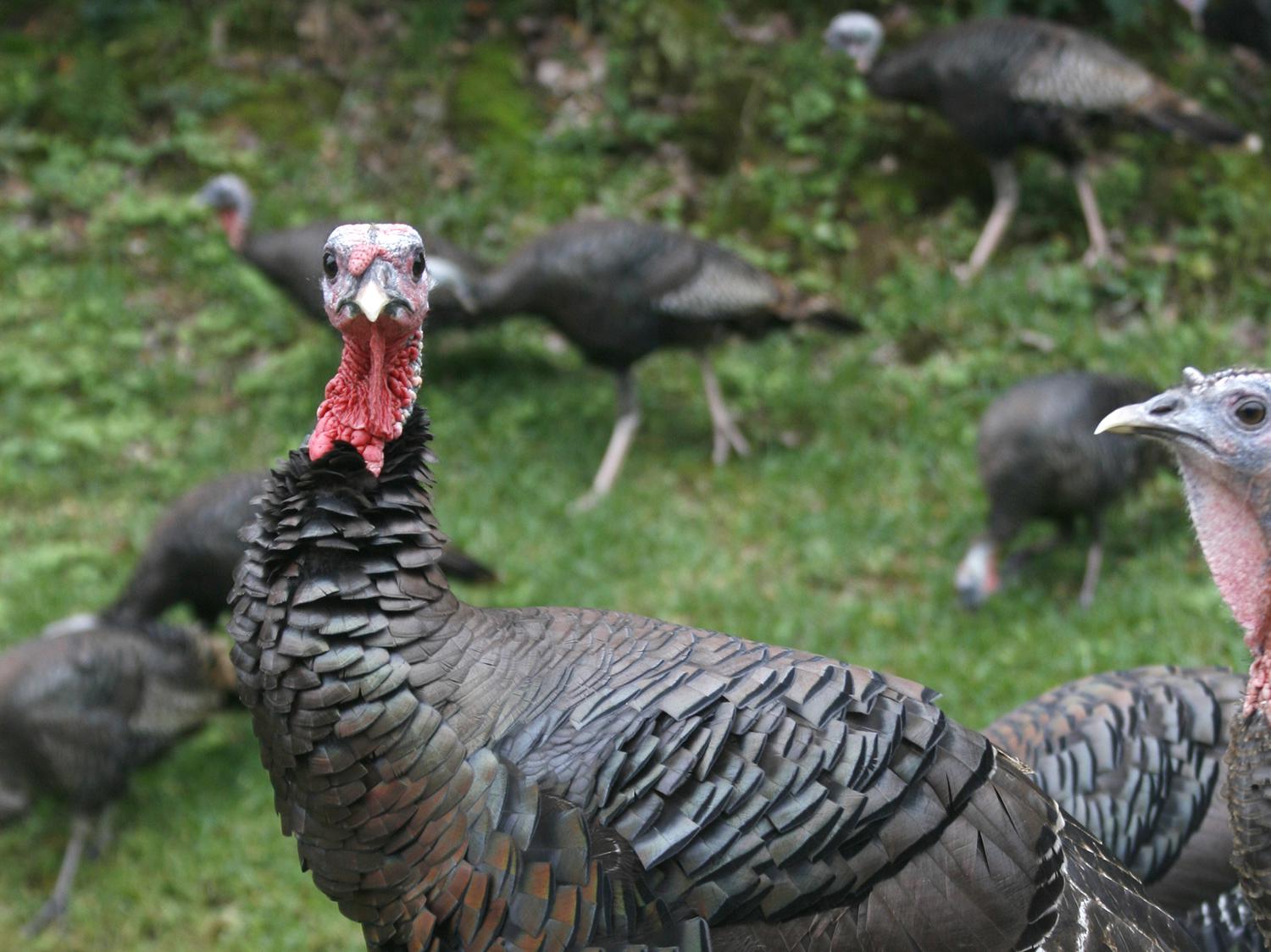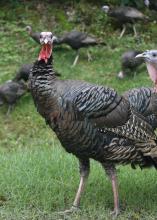Information Possibly Outdated
The information presented on this page was originally released on March 10, 2017. It may not be outdated, but please search our site for more current information. If you plan to quote or reference this information in a publication, please check with the Extension specialist or author before proceeding.
Gobbling activity fluctuates throughout hunting season
STARKVILLE, Miss. -- With spring comes turkey season and the countless hours spent listening for the chill-inducing gobble of a big tom.
The adult, male turkey, called a tom or gobbler, produces these calls in an attempt to attract as many hens as possible with the intentions of breeding. In many instances, a tom will gobble several times first thing in the morning before leaving its roost. This performance is to get an early start on convincing hens to visit him. Juvenile males, known as jakes, also participate in this behavior, but, in many instances, they are just spectators during their first year.
Although any time spent in the outdoors is a good time, there are times when your chances of hearing these gobbles are higher than others. Gobbling activity increases significantly during breeding season. The timing of breeding season is determined primarily by the amount of daylight hours during a 24-hour period, although weather can have an effect.
Spring turkey season occurs during the breeding season in Mississippi. Factors influencing gobbling activity during this time can include the breakup of winter flocks, the beginning of hen nesting, and the renesting of hens that lost their first or second clutches. Weather conditions during a given day or time period can significantly influence wild turkey activity. However, there are patterns of gobbling activity from year to year that can be used to better your chances of hearing and/or harvesting one of these birds when planning a hunt.
Turkey season in Mississippi takes place from about March 15 to May 1 each year, with the week containing March 15 being the first week. According to the 2016 Mississippi Wild Turkey report, hunters reported hearing the most gobbles during the fifth week of the 2015 hunting season. This timing has been seen in only three of the last 10 hunting seasons.
The fourth, fifth and sixth weeks, collectively, have been reported as having the most gobbles heard in seven of the last 10 hunting seasons. These data were collected through individual hunter observations and reported as the number of gobbles heard per 10 hours of hunting. The numbers were then averaged for each week.
Hunter observations such as these help biologist develop appropriate seasons and monitor population changes to ensure wild turkeys will be around and healthy for many years to come. If you are interested in participating in this year’s turkey report, fill out a spring gobbler hunter survey application located at http://www.mdwfp.com.
While turkey hunters and turkey enthusiasts such as myself wish we could pursue or hear these birds every day of the season, most of us are rarely that lucky. Even though no one can predict what the 2017 hunting season will bring, paying attention to the trends that have occurred for the last 10 seasons may help in your pursuit of the wild turkey.
Good luck during your 2017 turkey season.

Editor’s Note: Extension Outdoors is a column authored by several different experts in the Mississippi State University Extension Service.








